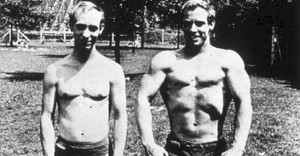Humans have a natural rebellious nature because they feel entitled to control their own life. They do not wish for someone else to coerce them into doing something even if they feel that it is in their best interests. Instead, they wish to be given the chance to choose an action that is in their best interests. When designing public health policy, it also best to limit coercion as much as possible because it will evoke more cooperation from the citizens.
Firstly, it is important to know that there are three forms of coercion: hard paternalism, soft paternalism, and maternalism. S. Holm describes hard paternalism as giving someone no option, soft paternalism as attempting to influence someone’s choice via manipulation of information, and maternalism as influencing someone’s decisions through guilt (Holland 392). Secondly, it is also important to know that no matter the circumstances, there will always be some level of outside influence on which decision a person chooses to make. The key is to make the person feel as if they have autonomously made the decision.
Obviously, hard paternalism can deter people from going through with a decision because they feel forced into their situation. D. Isaacs, H.A. Kilham, and H. Marshall assert that people “who are coerced into an action may be more likely to perceive the action as being risky than if they are persuaded into it (Holland 403). Essentially, when people are obligated to choose a default choice, they assume that there are underlying consequences that are not disclosed because these consequences will dissuade them from choosing that particular option. For instance, Simon Chapman argues that people are so hostile towards public cigarette smoking because they are forced to share the person’s toxic smoke. Nevertheless, people enjoy sitting around a warm campfire, where they, by choice, inhale its toxic smoke (Holland 408).
Meanwhile, the act of persuading, such as in soft paternalism and maternalism, forces one to unveil reasons why people should choose a certain option over other ones. This allows the person to feel that there are other options, but one particular choice is the best choice due to certain specifications. For example, educating people about the risks of obesity allows people to see that their life expectancy can be improved and their risk of disease can be lowered if they choose to diet healthily and exercise. Using soft paternalism, officials could lower insurance rates for those who live a healthy lifestyle. People still can choose to eat unhealthily, but it would not be in their best interest because they will have to spend more money to cater to a lifestyle that has been proven to shorten their lifespan. From a maternalistic approach, officials could inform parents that an unhealthy lifestyle could lead to a plethora of diseases such as asthma, diabetes, and heart disease that will lead to a poor condition of life as they grow up. Good parents should then feel guilty and thus decide to set a positive example for their children as well as ensure that their children follow this example.
Subsequently, compulsion may not be necessary in order to enact public health policy because simply giving the people an option will respect their right to choice, a key component of autonomy. One of the only instances in which compulsion may work is in a case in which a disease is immediately life threatening. This is because people value their lives and will do anything to preserve them, including subjecting themselves to mandated treatment. Still, people will view this mandate as a choice to do whatever it takes to save their life. In the end, people will comply as long as they feel that they are in control.
Sources:
Chapman, Simon. “Banning Smoking Outdoors Is Seldom Ethically Justifiable.” Arguing About Bioethics. Ed. Stephen Holland. New York: Routledge, 2012. 407-11. Print.
Holm, S. “Obesity Interventions and Ethics.” Arguing About Bioethics. Ed. Stephen Holland. New York: Routledge, 2012. 392-97. Print.
Isaacs, D., H. A. Kilham, and H. Marshall. “Should Routine Childhood Immunizations Be Compulsory?” Arguing About Bioethics. Ed. Stephen Holland. New York: Routledge, 2012. 398-406. Print.


